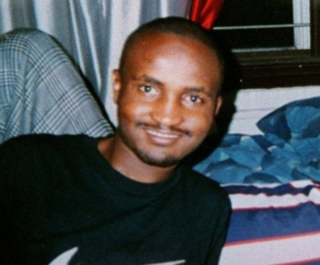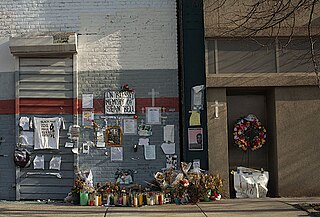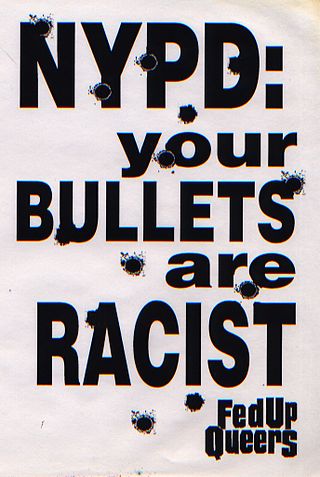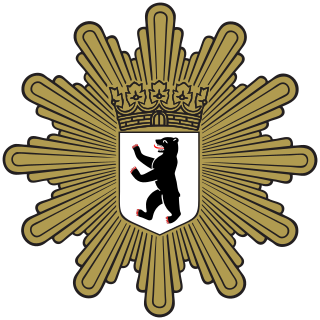
The police are a constituted body of persons empowered by a state, with the aim to enforce the law, protect public order, and the public itself. This commonly includes ensuring the safety, health, and possessions of citizens, and to prevent crime and civil disorder. Their lawful powers encompass arrest and the use of force legitimized by the state via the monopoly on violence. The term is most commonly associated with the police forces of a sovereign state that are authorized to exercise the police power of that state within a defined legal or territorial area of responsibility. Police forces are often defined as being separate from the military and other organizations involved in the defense of the state against foreign aggressors; however, gendarmerie are military units charged with civil policing. Police forces are usually public sector services, funded through taxes.

A detective is an investigator, usually a member of a law enforcement agency. They often collect information to solve crimes by talking to witnesses and informants, collecting physical evidence, or searching records in databases. This leads them to arrest criminals and enable them to be convicted in court. A detective may work for the police or privately.

In the early hours of February 4, 1999, an unarmed 23-year-old Guinean student named Amadou Diallo was fired upon with 41 rounds and shot a total of 19 times by four New York City Police Department plainclothes officers: Sean Carroll, Richard Murphy, Edward McMellon, and Kenneth Boss. Carroll later claimed to have mistaken Diallo for a rape suspect from one year earlier.
The Criminal Investigation Department (CID) is the branch of a police force to which most plainclothes detectives belong in the United Kingdom and many Commonwealth nations. A force's CID is distinct from its Special Branch. The name derives from the CID of the Metropolitan Police, formed on 8 April 1878 by C. E. Howard Vincent as a re-formation of its Detective Branch. British colonial police forces all over the world adopted the terminology developed in the UK in the 19th and early 20th centuries, and later the police forces of those countries often retained it after independence. English-language media often use "CID" as a translation to refer to comparable organisations in other countries.

The Community Resources Against Street Hoodlums (CRASH) was a specialized gang intelligence unit of the Los Angeles Police Department (LAPD) tasked with combating gang-related crime between 1979 and 2000. The unit was established in the South Central district of Los Angeles, California, United States, to combat rising gang violence during the period. Each of the LAPD's 18 divisions had a CRASH unit assigned to it, whose primary goal was to suppress gang-related crimes in the city, which came about primarily from the increase in illegal drug trade.

Kriminalpolizei is the standard term for the criminal investigation agency within the police forces of Germany, Austria, and the German-speaking cantons of Switzerland. In Nazi Germany, the Kripo was the criminal police department for the entire Reich. Today, in the Federal Republic of Germany, the state police (Landespolizei) perform the majority of investigations. Its Criminal Investigation Department is known as the Kriminalpolizei or more colloquially, the Kripo.

The National Police Corps is the national civilian police force of Spain. The CNP is mainly responsible for policing urban areas, whilst rural policing is generally the responsibility of the Civil Guard, the Spanish national gendarmerie force. The CNP operates under the authority of Spain's Ministry of the Interior. They mostly handle criminal investigation, judicial, terrorism and immigration matters. The powers of the National Police Corps varies according to the autonomous community. For example, the Ertzaintza and the Mossos d'Esquadra are the primary police agencies in the Basque Country and Catalonia, respectively. In Navarre they share some duties jointly with Policía Foral (Foruzaingoa).

The Tampa Police Department (TPD) is the primary law enforcement agency for the city of Tampa, Florida. The Tampa Police Department has 985 authorized sworn law enforcement personnel positions and more than 350 civilian and support staff personnel positions. The current police chief is Lee Bercaw.

Anthony H. Gair was an American attorney and advocate. He was a partner of the law firm Gair, Gair, Conason, Rubinowitz, Bloom, Hershenhorn, Steigman & Mackauf, which was founded by his parents in 1945. He looks for cases that are in the public interest. Notably, he represented the family of Amadou Diallo in a case that spurred reform of the New York City Police Department.

Sean Bell, an unarmed African American, was shot and killed by undercover New York City Police Department (NYPD) officers in the borough of Queens on November 25, 2006. Bell and two of his friends were shot when both plainclothes and undercover NYPD officers fired a total of 50 rounds. Bell's friends, Trent Benefield and Joseph Guzman, were severely wounded. The incident sparked fierce criticism of the New York City Police Department from members of the public and drew comparisons to the 1999 killing of Amadou Diallo. Three of the five detectives involved in the shooting went to trial on charges of first- and second-degree manslaughter, first- and second-degree assault, and second-degree reckless endangerment; they were found not guilty.

The GardaNational Bureau of Criminal Investigation (GNBCI) - formerly known as the Central Detective Unit (CDU) - is the main national criminal investigative branch of the Garda Síochána, the national police force of Ireland.
Daniels, et al. v. the City of New York was a class action lawsuit filed in 1999 against the New York Police Department (NYPD) and the City of New York, charging them with racial profiling and unlawful stop and frisk, and requesting the disbanding of the NYPD Street Crimes Unit.
The color of the day is a signal used by plainclothes officers of some police departments in the United States. It is used to assist in the identification of plainclothes police officers by those in uniform. It is used by the New York City Police Department and other law enforcement agencies.

The Florida Department of Law Enforcement (FDLE) is a state-wide investigative law enforcement agency within the state of Florida. The department formally coordinates eight boards, councils, and commissions. FDLE's duties, responsibilities, and procedures are mandated through Chapter 943, Florida Statutes, and Chapter 11, Florida Administrative Code. FDLE is headed by a commissioner who reports to the Florida Cabinet, which is composed of the governor, the attorney general, the chief financial officer, and the commissioner of agriculture. The commissioner is appointed to his position by the governor and cabinet and confirmed by the Florida Senate.

The New York City Police Department (NYPD) is structured into numerous bureaus and units. As a whole, the NYPD is headed by the Police Commissioner, a civilian administrator appointed by the Mayor, with the senior sworn uniformed officer of the service titled "Chief of Department". The Police Commissioner appoints the First Deputy Commissioner as the department's second-in-command and the Chief of Department as the department's highest ranking uniformed officer. The commissioner also appoints a number of deputy and assistant commissioners who do not have operational command and are solely for support and administrative function. The department is divided into twenty bureaus, six of which are enforcement bureaus. Each enforcement bureau is further subdivided into sections, divisions, and units, and into patrol boroughs, precincts, and detective squads. Each bureau is commanded by a bureau chief. There are also a number of specialized units that are not part of any of the bureaus and report to the Chief of the Department.

Throughout the history of the New York City Police Department, numerous instances of corruption, misconduct, and other allegations of such, have occurred. Over 12,000 cases have resulted in lawsuit settlements totaling over $400 million during a five-year period ending in 2014. In 2019, misconduct lawsuits cost the taxpayer $68,688,423, a 76 percent increase over the previous year, including about $10 million paid out to two exonerated individuals who had been falsely convicted and imprisoned.

Fed Up Queers, or FUQ, was a queer activist direct action group that began in New York City. The group was made up mostly of lesbians such as Jennifer Flynn, though notable participants also included gay rights pioneer and Stonewall riots veteran Bob Kohler, and writer Mattilda Bernstein Sycamore. The activists who formed FUQ came together loosely for a few actions in 1998, but the first action attributed to Fed Up Queers was on World AIDS Day, December 1, 1998, when they visited New York State Assemblywoman Nettie Mayersohn's house in Queens at midnight to protest her stance on names reporting.
In 2012, there were 451,142 crimes reported in the U.S. state of New York, including 686 murders. In 2014, 409,386 crimes were reported in the state, including 616 murders. This number further decreased in 2019, in which 335,736 crimes were reported, with 558 cases of murder. Throughout 2010-2019, violent crime dropped by 8.0%, and property crime dropped by -29.0%.

The Berlin Police is the Landespolizei force for the city-state of Berlin, Germany. Law enforcement in Germany is divided between federal and state (Land) agencies.
Robert Thomas Johnson is an American attorney and jurist serving as a justice of the New York State Supreme Court in the county of the Bronx. He was previously a New York City Criminal Court judge, an acting justice of the New York State Supreme Court, and a long-time Bronx County district attorney in New York City.














